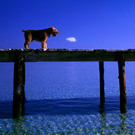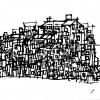My new Darkroom in Phuket Thailand
-
Recently Browsing 0 members
- No registered users viewing this page.
-
Similar Content
-
- 1 reply
- 123 views
-
- 6 replies
- 189 views
-
- 20 replies
- 1,204 views
-
- 0 replies
- 449 views
-
New Sakura
By mikozia,
- 2 replies
- 181 views
-





Recommended Posts
Join the conversation
You can post now and register later. If you have an account, sign in now to post with your account.
Note: Your post will require moderator approval before it will be visible.